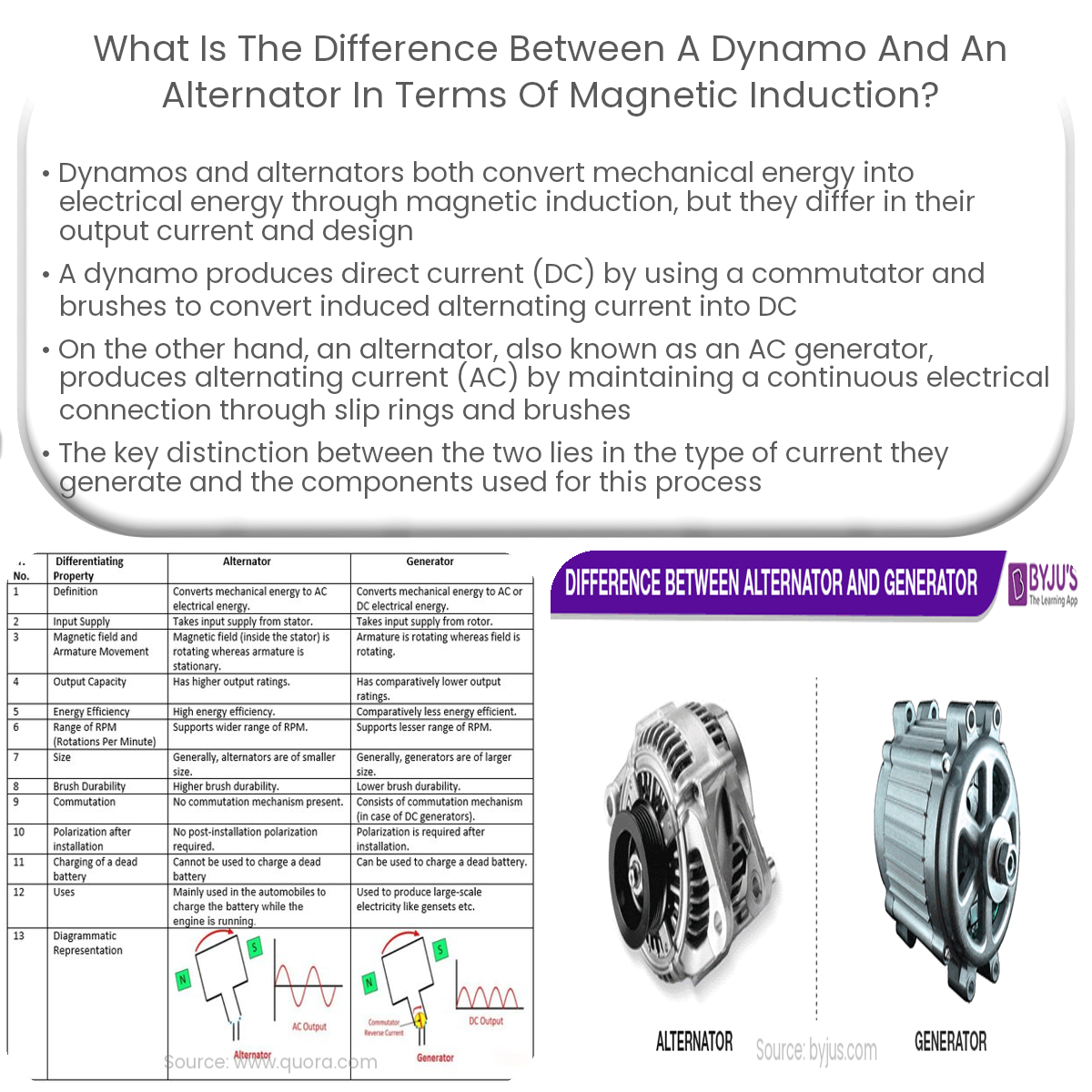The key difference is that dynamos generate direct current (DC) using a commutator, while alternators produce alternating current (AC) using slip rings.
Difference Between a Dynamo and an Alternator in Terms of Magnetic Induction
Dynamos and alternators are both electrical generators that convert mechanical energy into electrical energy through magnetic induction. However, they differ in the type of current they produce and the design principles that govern their operation.
Dynamo
A dynamo is an electrical generator that produces direct current (DC) through the process of electromagnetic induction. Dynamos typically consist of the following components:
- Stator: The stationary part containing the magnetic field, usually generated by electromagnets
- Rotor: The rotating part containing the coil or armature
- Commutator and brushes: These provide electrical connections to the rotating coil and rectify the AC into DC
As the rotor spins within the stator’s magnetic field, the magnetic field lines cut through the coil, inducing an electromotive force (EMF) in the conductor. This induced EMF generates an alternating current (AC) in the coil, which is then converted into a unidirectional direct current (DC) by the commutator and brushes.
Alternator
An alternator, also known as an AC generator, produces alternating current (AC) by rotating a coil within a magnetic field. The main components of an alternator include:
- Stator: The stationary part containing the magnetic field, usually generated by electromagnets
- Rotor: The rotating part containing the coil or armature
- Slip rings and brushes: These provide electrical connections to the rotating coil
When the rotor spins within the stator’s magnetic field, the magnetic field lines cut through the coil, inducing an EMF. The induced EMF causes an alternating current to flow through the coil, as the direction of the current changes with the coil’s orientation relative to the magnetic field. The slip rings and brushes maintain a continuous electrical connection, allowing the AC output to be extracted from the generator.
Key Differences
The primary differences between a dynamo and an alternator in terms of magnetic induction are:
- Output Current: Dynamos generate direct current (DC), while alternators produce alternating current (AC).
- Commutator vs. Slip Rings: Dynamos use a commutator and brushes to convert AC into DC, while alternators use slip rings and brushes to maintain a continuous AC output.
Conclusion
In terms of magnetic induction, the main difference between a dynamo and an alternator is the type of current they generate. Dynamos produce direct current (DC) by using a commutator to rectify the induced alternating current, while alternators produce alternating current (AC) by maintaining a continuous connection through slip rings and brushes.


